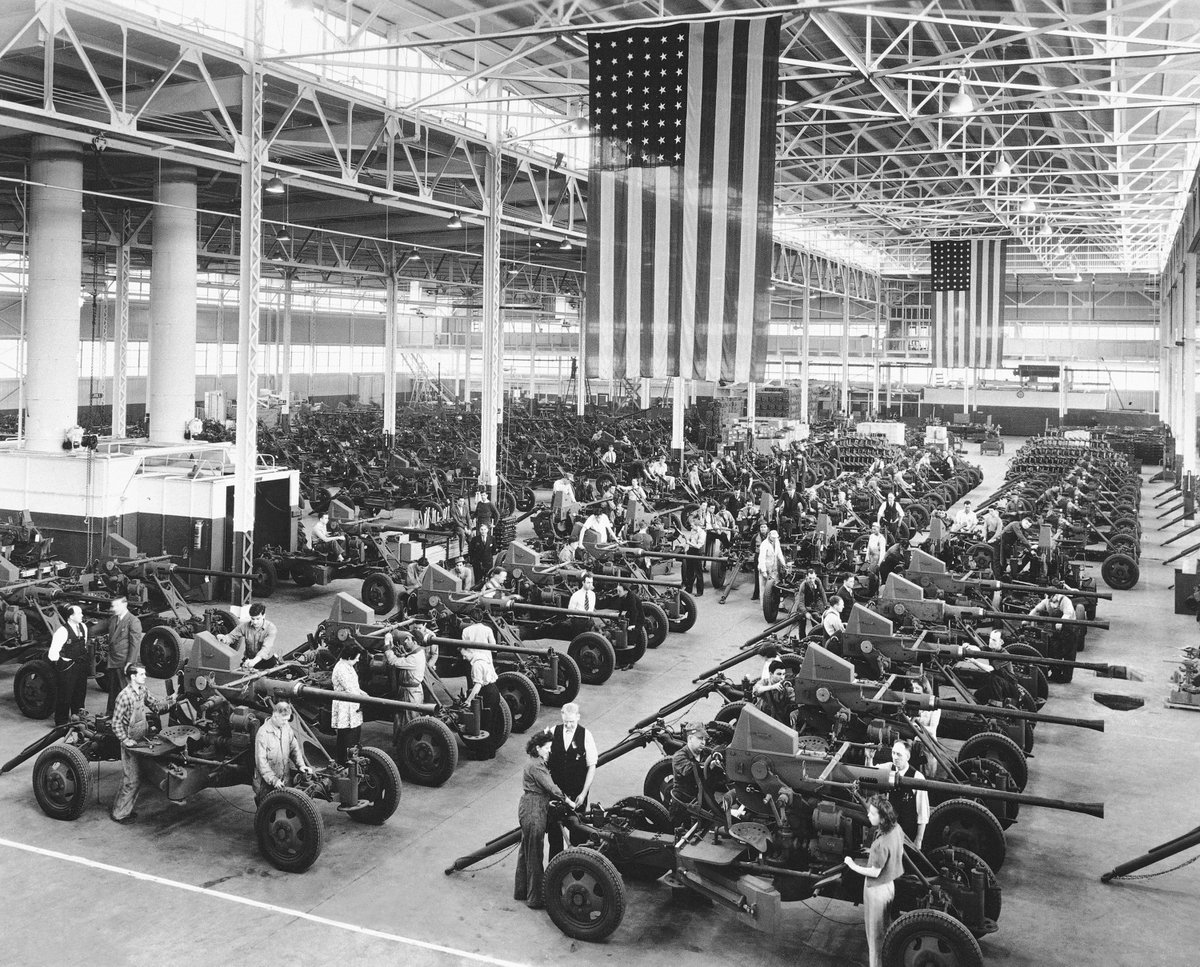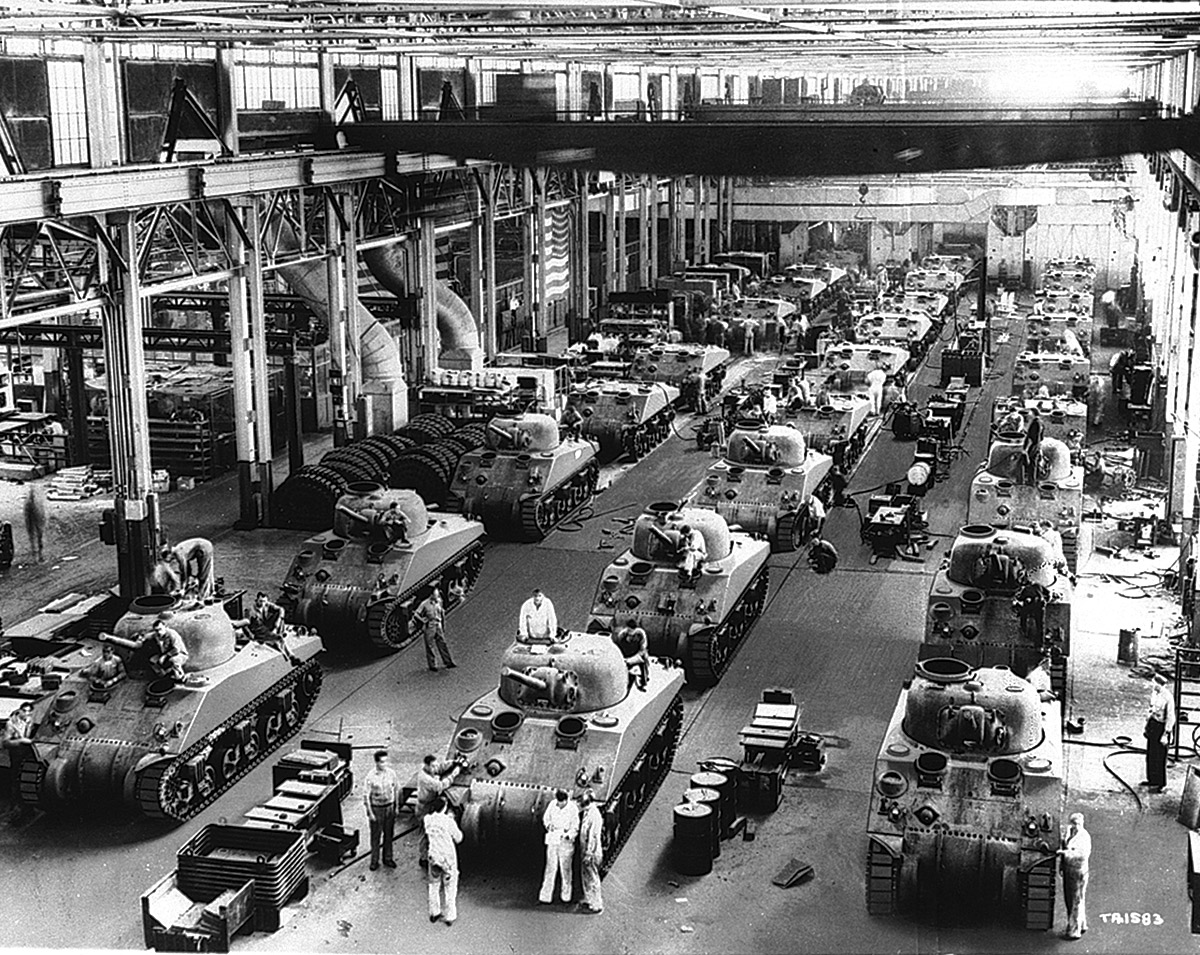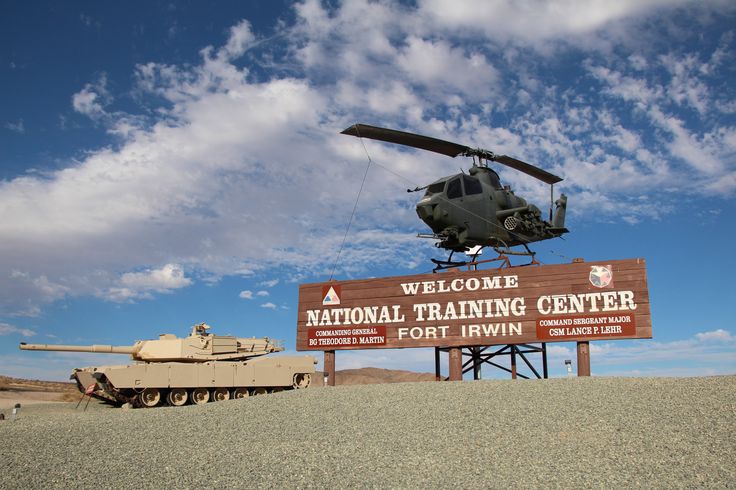
In the late 1930s, the US faced a multifaceted problem. We had delayed mobilization and preparations for a war that we didn’t think would reach us.
When we had the time to prepare, Congress did not approve the resources. Now we were getting the resources but short on time. 

We could employ a small well-trained force now/soon OR employ a large well-trained force a year later. But we could not do both.
With limited materiel (military equipment, weapons, supplies, etc.), we faced a similar problem.
We could send materiel overseas to arm and supply Allied troops who needed it now, OR we could send it to American training camps to facilitate the training of our @USArmy, which would not enter the fight until trained.
This issue with US military supplies was repeatedly expressed before and after the 1941 Lend-Lease Act. 

The Lend-Lease Act was officially called “An Act to Promote the Defense of the United States” and it was essentially a program of supplying the Allies with food, oil, and military equipment (materiel) from 1941 until 1945. 

So, to give us more time to prepare our military for war, we helped our Allies continue fighting. (Charts from ibiblio.org/hyperwar/USA/r… ) 





For a while, the @USArmy was low on recruits because many were sent to the air and sea forces, which were being readied for immediate duty. But recruits were also put to use elsewhere because the equipment needed to make the recruits useful to the Army was not yet available. 







Much to the chagrin of Army commanders.
While our Army recruits waited for weapons to train on, some were diverted to industry to work for the war effort until they could train to fight. 







“In the making of decisions, military wisdom was not always enough, for there were nonmilitary considerations which at times outweighed the military.” 



“The reason was partly that a democracy is not ruled by warriors, even in wartime, but by a civilian authority, with the result that the wishes of Army or Navy had always to meet with approval of the President.” 







Sometimes the problem was a greater, more pressing demand for manpower elsewhere, such as within the industrial economy. Other times it was that the military requirements were not well understood.
One of the greatest issues with shifting a peace-minded population to the temporary pursuit of war is that the realities of war are often in complete opposition to those of peace.
For example, in a typical peace-minded economy, someone trained for a job will put forth just enough effort to accomplish that job. He/she will avoid excess use of manpower as well as the excess use (or waste) of materials. 

This is an easily understandable “economy of force” when considering industry during peacetime. But war is wasteful and somewhat irrational. 







Military commanders do not use “just enough” in most contexts. A military force that is “just strong enough” will suffer heavy casualties. But a force that is “vastly superior” will accomplish a mission (ideally) without the serious loss of soldiers or time. 





This, at least in theory, allows the military to effectively accomplish one task and quickly move on to the next, wasting little time and fewer resources (including soldiers). 

A “vastly superior force” has a variable definition. It could be greater numbers of soldiers, or newer weapons and techniques. It could be the force capable of transporting men and supplies more effectively. And it is also a label that changes, sometimes quickly.
In 1940, Blitzkrieg showed the Germans as a “vastly superior force”, while in 1944, with the drive through Normandy and beyond, the Allies were the “vastly superior force”. 



All of this seems pretty obvious now, but at the time it was not always clear who was or would be superior. And it is only our best guess as to how much materiel will be consumed, and how quickly, once the military is employed. 



Military planners during peacetime have the unfortunate challenge of convincing civilian authorities that we must accept “wastefulness” and also prepare for it. “The nation that winds up for war with a surplus of equipment is likely to be the nation that wins…” 



We learn these lessons painfully at times, and once the war is over, we often quickly forget until the next time, when we will again learn painfully. But these lessons can be recorded and studied. @USArmyCMH @Erikhistorian @ArmyUPress @KateDahls @AMRiotto
We’ll talk more about materiel as the series progresses. If you're just tuning in or you've missed any of the previous threads, you can find them all saved on this account under ⚡️Moments or with this direct link twitter.com/i/events/13642…
• • •
Missing some Tweet in this thread? You can try to
force a refresh































